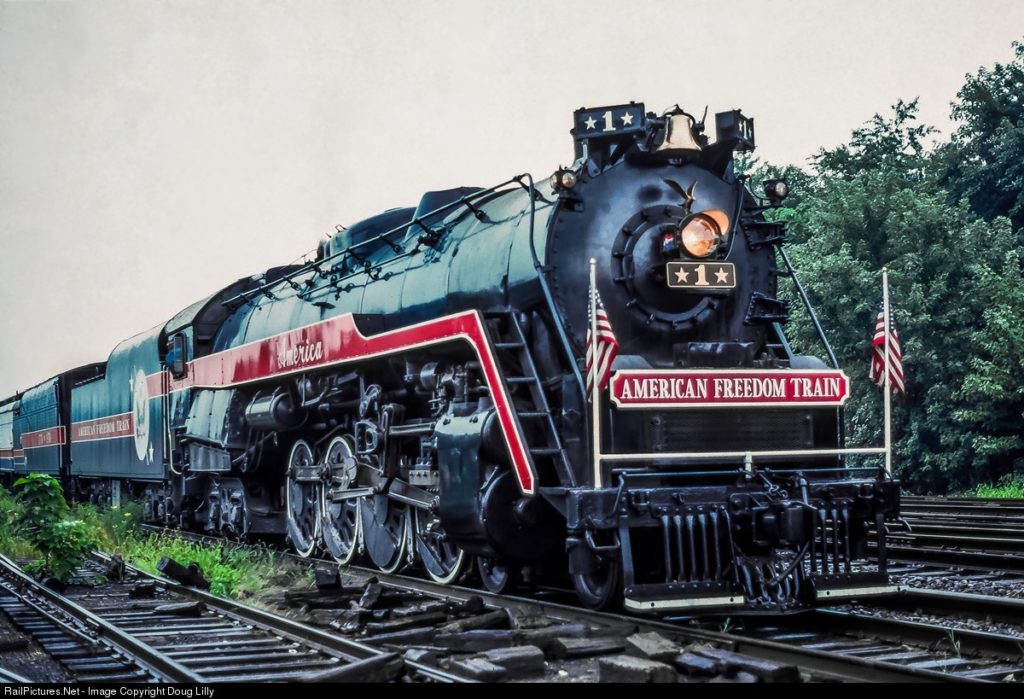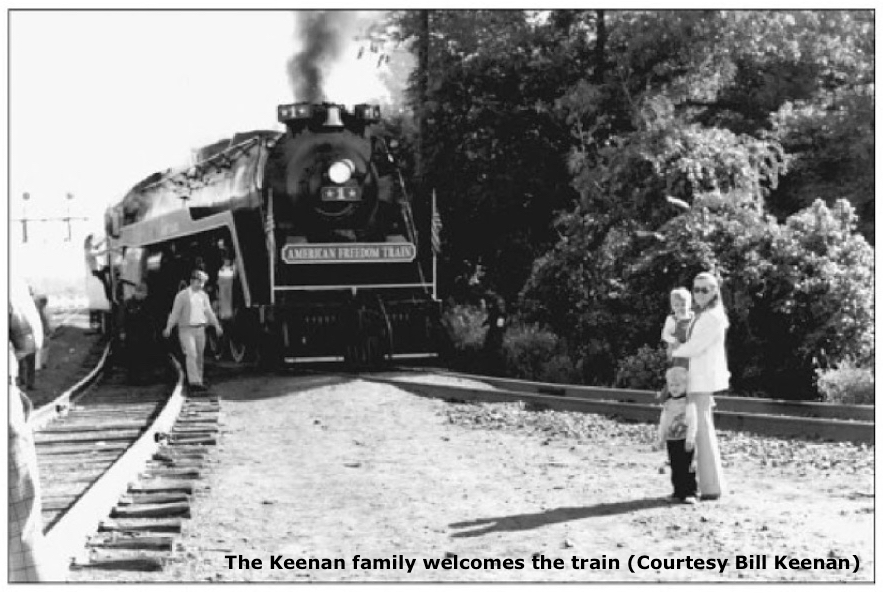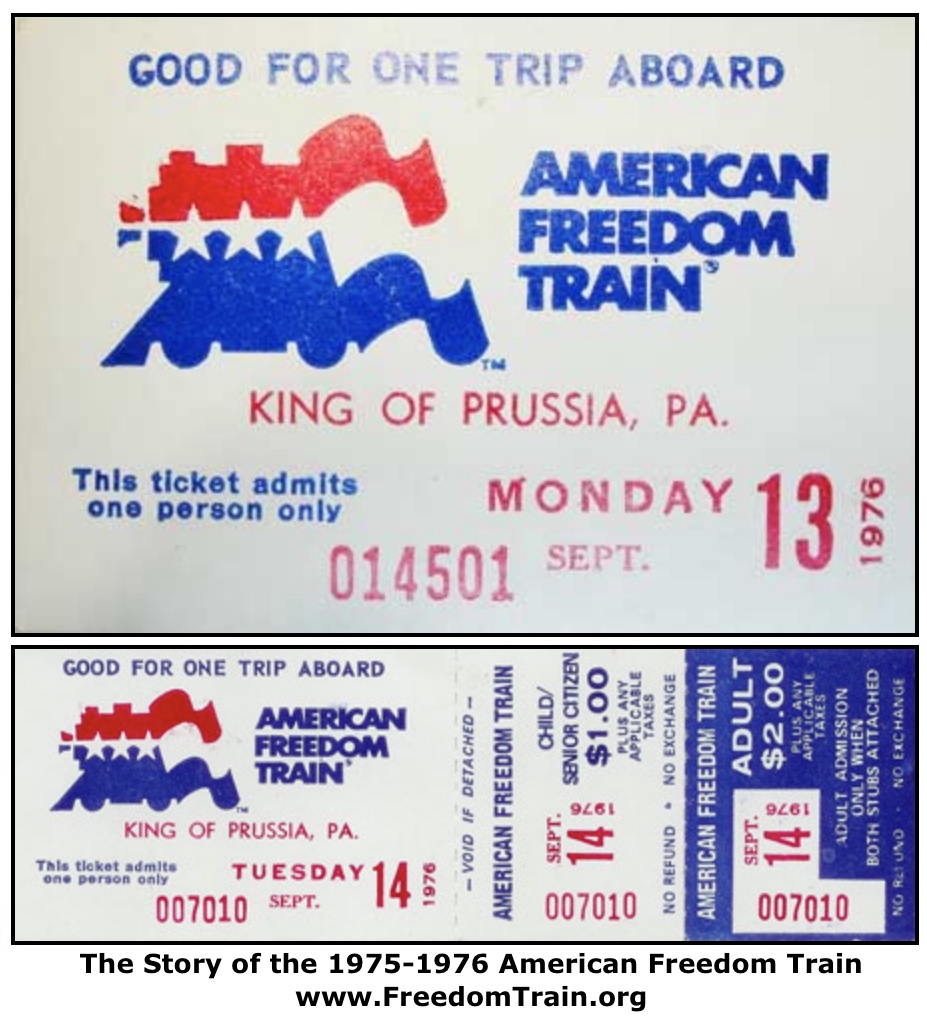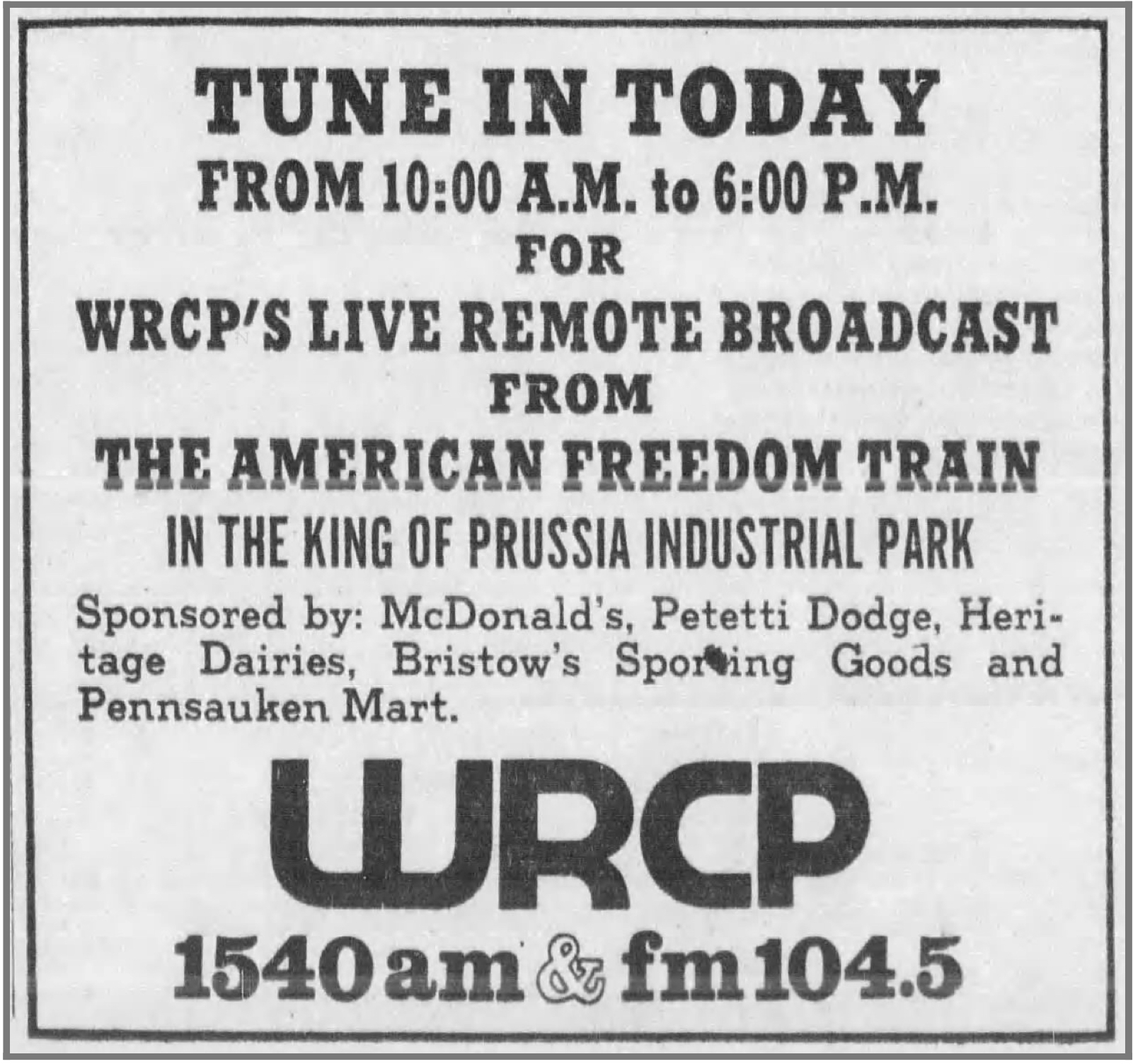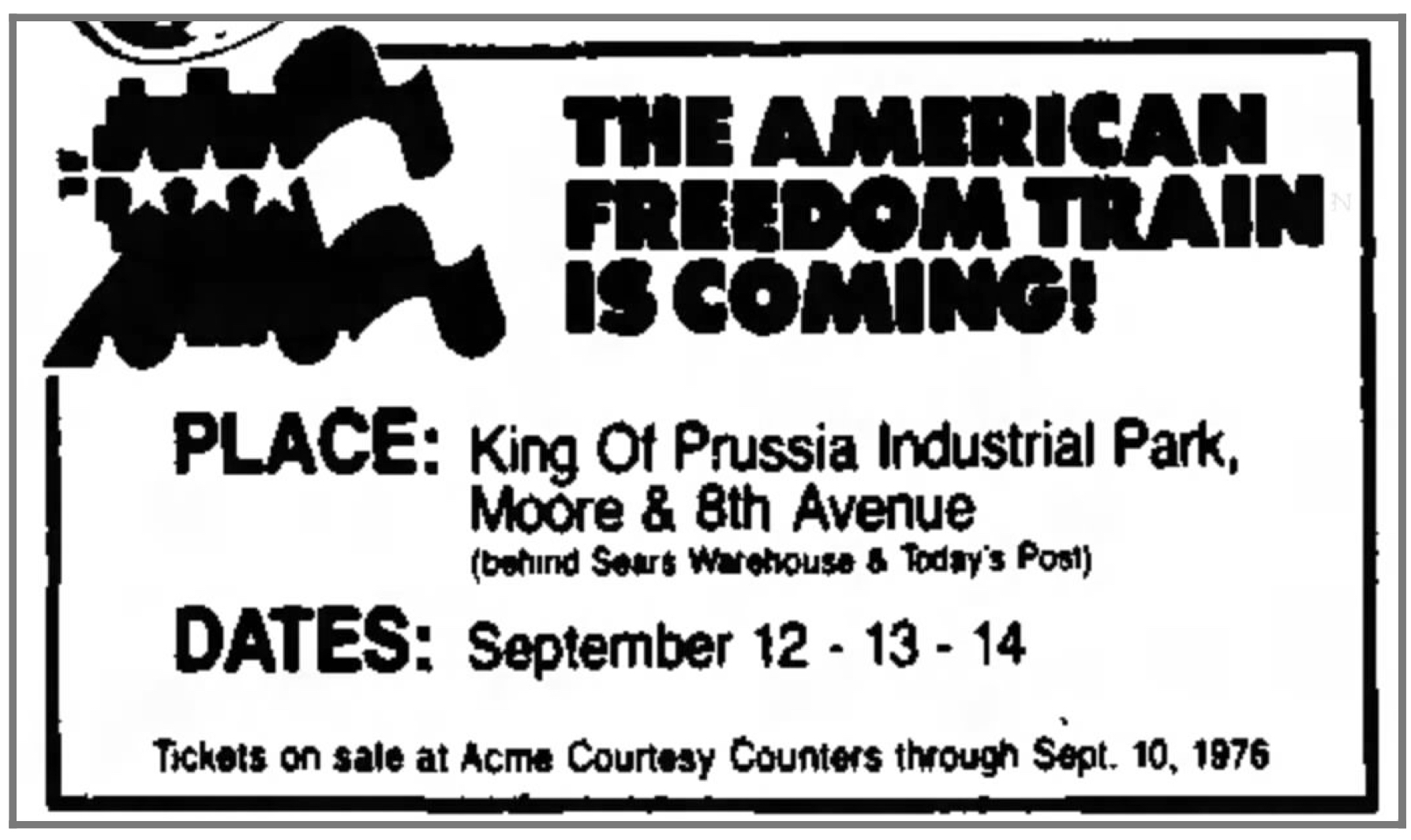On September 12, 1976, the American Freedom Train arrived in King of Prussia from its cross-country journey. It was switched at Abrams Yard to an industrial siding in the King of Prussia Industrial Park near the old Sears warehouse on Valley Forge Road where it remained until September 14.
On the first day, 8,500 people went through the exhibit cars in seven hours. To eliminate long waiting lines, visitors were pulled through the ten main sections of the exhibit on a moving walkway. A brochure explained that the continuous montage of voices interpreting America’s past was intended to engulf the visitor “in a kaleidoscope of sights and sounds designed to create a spirit of pride and accomplishment.”
The train brought history to the people, especially those from towns in ‘Middle America’ who would never have a chance to see these historical objects in museums. The whole spectrum of American life over the past 200 years was the theme. The 500+ objects on loan from 285 institutions and collectors were as diverse as one could imagine. It was a half mile-long compression of all that is America – people, artifacts, traditions and innovations.
The 10-car main tour started with a look through the window of an 18th century print shop, holding Rembrandt Peale’s portrait of George Washington, Ben Franklin’s handwritten draft of the Articles of Confederation and the Old North Church Lantern. More precious treasures of Americana included George Washington’s copy of the Constitution; the original Louisiana Purchase; one of 50 remaining copies of the first Bible printed in America (during the Revolutionary War no Bibles could be imported from England); Judy Garland’s dress from The Wizard of Oz; teddy bear owned by Shirley Temple; Joe Frazier’s boxing trunks; Martin Luther King’s pulpit and robes; a rock from the moon; Amelia Earhart’s goggles and scarf; Thomas Edison’s light bulb; Walt Whitman’s poetry; Joe Frazier’s cape, a plan of the Dallas-Fort Worth airport; a trunk carried by immigrants to America; an early Singer sewing machine; a television receiver with a tiny screen built in 1930; the bat Hank Aaron used to hit his record-breaking 714th home run; the recorded voice of Edward R. Murrow; film clips from old movies; paintings by Albert Bierstadt, John Sloan and Georgia O’Keefe; a piece of a moon rock; Abraham Lincoln’s rocking chair; and the voice of John F. Kennedy endlessly repeating, “…ask not what your country is going to do for you – ask what you can do for your country.” Another attraction on the train was the Freedom Bell, twice the size of the Philadelphia Liberty Bell which it was patterned after.
The Freedom Train traveled 25,000 miles through 48 states, made more than 130 stops and was visited by about 7 million persons. Millions more stood trackside to see it go by. The twenty-six-car train was powered by three newly restored steam locomotives. The first to pull the train was former Reading Company 4-8-4 #2101. The train’s ten display cars were converted from New York Central and Penn Central baggage cars.
The train was the brainchild of Ross E. Rowland, a wealthy commodities broker and railroad buff, who not only single handedly got the non-profit privately funded Bicentennial project on the tracks, but whenever possible, served as the train’s engineer. In 1973 he took a live of absence from his Wall Street office and worked full time to get the train going. He did it with a lot of his own money and with substantial grants from four large corporations. The admission fees and a percentage of the concession stand sales provided operating revenues, and when the foundation established to operate the train went out of business, any unexpended funds were to be donated to charity.
The train’s tour began April 1, 1975, in Wilmington, Delaware. The train then traveled northeast to New England, west through Pennsylvania, Ohio to Michigan, then around Lake Michigan to Illinois and Wisconsin. From the Midwest, the tour continued westward.
For 1976, the tour continued from southern California eastward then turned north to visit Kansas and Missouri before traveling through the Gulf Coast states and then north again to Pennsylvania, through the Abrams Yard in Upper Merion Township.
After it’s King of Prussia stop, the tour continued southeast to New Jersey then south along the Atlantic coast before finally ending December 26, 1976 in Miami, Florida. The last visitor went through the train December 31, 1976.
The American Freedom Train which toured the country for the United States Bicentennial celebration in 1975–1976 was not the only ‘Freedom Train.’ The 1947–1949 Freedom Train was also a special exhibit train. It toured the United States as a memorial to America’s victory in World War II which gave Rowland the idea for the second Freedom Train. Both trains were painted in special red, white and blue paint schemes, and both toured the forty-eight contiguous states with displays of Americana and related historical artifacts. The two trains took different routes around the forty-eight states, but they both stopped for public displays in each of them.

